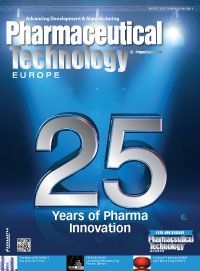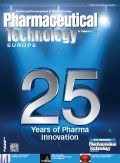Technology and QbD Drive Pharma Development
Pharmaceutical Technology Europe
Quality by design, process analytical technology, and high throughput screening have helped drive progress in pharmaceutical development.

Pharmaceutical Technology Europe is not the only pharma industry entity marking a milestone anniversary in 2014. Since its inception, CPhI has grown to become a global marketplace for pharmaceutical ingredients buyers, manufacturers, and suppliers. The event, which attracted nearly 34,000 participants in 2013, is marking its 25th anniversary at the 2014 CPhI Worldwide event in Paris, 7-9 October.
Chris Kilbee, group director pharma, CPhI, identifies recent advances in pharmaceutical development and outlines projections for the future in a discussion with Pharmaceutical Technology Europe.
Advances in pharmaceutical developmentPTE: What are the most significant advances in pharmaceutical development in the past 10 years?
Kilbee (CPhI): Over the past 10 years, the pharmaceutical industry has experienced a lot of change and development, with many significant advances. One of these is quality by design (QbD), which is seen as essential to the process of harmonising product and process development. It accelerates standards and allows for more developed partnerships, designed to consistently meet critical quality attributes.
Another advance is process analytical technology (PAT), a tool to help companies achieve QbD; it has been key to pharmaceuticals this past decade as it allows product quality information to be generated real time. The past several years have seen more manufacturers implement PAT in order to achieve QbD, allowing a greater guarantee that products meet quality demands and comply with regulations.
Also important to the pharmaceutical industry has been companion diagnostics. With a growing sector of personalised medicine, companion diagnostics are becoming more important to meet the expectations of all stakeholders and on the quality and therapeutic effect of drugs produced. Especially important have been the development of these predictive tests for patients with specific types of cancer, allowing targeted drugs to be developed.
In addition, the development of high throughput screening (HTS) has been a significant advancement of the industry as it allows systems to screen more samples in less time, increasing the efficiency of pharmaceutical development. It has helped a lot of drugs get to market.

Pharmaceutical Technology Europe25th Anniversary Issue
PTE: What changes in drug development have either driven or resulted from these advances?
Kilbee (CPhI): Companion diagnostics continues to drive drug development as there is an increasing demand for companion drugs in this age of personalised medicine, which is perhaps the single most significant change for patients. Companion diagnostics also allows for smaller clinical trial designs and increased chances of regulatory approvals, as more can be known going into the development of the drug.
However, CPhI has also helped lay the foundations of drug development, and in honour of our 25th anniversary this year, we will be discussing some of the new drugs, processes and technologies that have been directly developed as a result of collaborations and partnerships made at CPhI events over the years. We will be announcing these at the 2014 show.
Moving forwardPTE: Looking ahead, what do you see as the most needed advances in the next 5 to 10 years?
Kilbee (CPhI): Looking ahead to the next five to ten years, one of the most needed advancements is in antibody drug conjugates, (ADCs). There is a blockbuster drug for solid tumours predicted in the next 10 years as well as ADCs to market for indications beyond cancer, such as inflammation. However, there is still much needed development to bring these to the market and the advances they will bring are critical. There is also further development needed in companion diagnostics and niche medicines.
In addition, implementation of QbD in all facilities and the use of PAT tools is very important to ensure the quality of the product and the efficiency of processes. The utilization of PAT tools will allow for a greater understanding of the manufacturing process, enabling tomorrow’s new products to move into the market faster and easier with more effective processes.
While there has been success with this in the past decade, it is imperative that all companies implement it with the rising regulations and price controls. However, what we are most excited about in the near future is the positive effect continuous processing could have on the industry. It seems unthinkable, but imagine a pharma industry that did not rely on batches.

About the Author
Chris Kilbee is group director pharma of CPhI.
